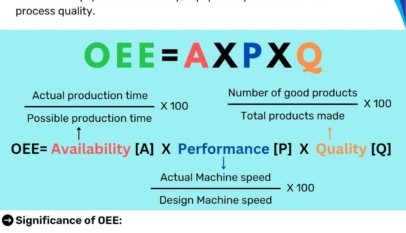Today’s post is about a couple of essential KPIs for the Maintenance department – Breakdown and Downtime, but to be more specific, we will discuss Mean Time Between Failures (MTBF) in detail.
Before reviewing MTBF, let’s define Breakdown and Downtime:
- Breakdown. Unexpected stoppage of the equipment when it is losing its function, regardless of the root cause of the failure. In terms of time, it can vary from 10 to 15 minutes, but it is up to the company to define the stoppage time. Not always the source of the breakdown is mechanical or electrical (traditionally considered Maintenance) in nature or easily seen; In fact, the head can be quite deceiving and often the result of minor conditions (i.e. dust, abrasion, dirt, loosening, warping, etc.) allowed to exist for a period leading to the actual breakdown.
- Downtime. When equipment is down, not running at rated speeds, or not converted to other products and sizes in assigned times, downtime is the loss of not utilizing operating labour and fixed costs efficiently. The variable costs (product, packaging and a large part of energy) are not used, but operating labour and fixed costs are. The latter is not a loss and is reflected in a higher cost per unit produced, which reduces profit.
Although unexpected failures cannot be predicted precisely, they can be estimated statistically by calculating the MTBF, and they can be evaluated for components and then combined to give a value for the complete machine.
The OEM can define and provide MTBF of the items whose failure will prevent the equipment from operating. These values can be derived from experience or theoretical analyses. The items can be expected to include seals, bearings, impeller/valve/port wear, coupling wear, motor features, and other unique items that make up complete systems.
It must be recognized that process variations and user practices will almost certainly have a major impact on the MTBF of a plant and the equipment incorporated in it. Historical data is preferable to theoretical data from the equipment supplier whenever available. The cost of each event and the total costs of these unexpected failures can be estimated in the same way routine maintenance costs are calculated.
MTBF is calculated as the average time between failures for repairable items.
The MTBF metric to help the plant focus on its most troublesome equipment seems relatively easy to develop.
The strategies for increasing MTBF by reducing the number of breakdowns were discussed in my previous posts and articles and will be addressed in future ones.


















